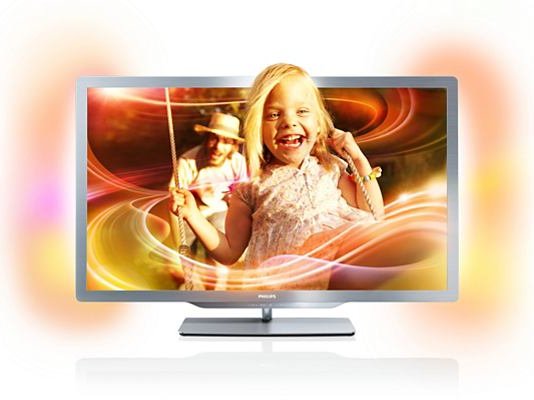Why you can trust TechRadar

Although it's great to see a Freeview HD tuner inside Philips' 2011 TVs, the eight-day electronic programme guide alongside it is sparse indeed. A mono grid showing now/next information for eight channels at once is impressively simple - we'll give it that - but also incredibly basic. Worse, there's no shortcut to it on the remote control, although if you do attach a USB stick, pausing live TV is just a case of pressing one button.
Remote control
The Philips 42PFL7666's nicely rounded remote is as impressive as any we've seen. Comfy to hold and with a high-end feel despite the use of plastic, it's accompanied by Philips' MyRemote app for iPhone/iPad/iPod touch and Android smartphones and tablets that mirrors the hard-button remote as well as introducing an element of swipe and gesture driven controls.
It should come into its own for inputting text, which is really only needed when using the Net TV's built-in web browser. It's slow and difficult to navigate using the hard button remote, with URL entry long-winded and off-putting, and that situation doesn't change much by using MyRemote.
In our test we managed to input text using a pop-up virtual keyboard within the app, but the web address that appeared on the TV screen bore no relation to what we had entered. On a few other occasions it failed to register any text at all - there's a syncing issue between the app and the TV since MyRemote often seems to be a few steps ahead of the TV.
What it does do, however, is stream photos in a smartphone directly to the TV screen. Who needs Apple TV?
DLNA
Back on the 'proper' remote we managed to indulge in some more manual DLNA networking, with our test files successfully streaming from both a networked Mac and playing from a USB flash drive in AVI, MKV and AVC HD flavours.
This Philips TV is all about its processing. With so much to think about in Pixel Precise HD, such as HD Natural Motion (which can be set to either on or off), Clear LCD (ditto), Super Resolution and various settings for dynamic contrast, backlight and MPEG reduction, there are too many variables to easily create the perfect picture on first use.
Sign up for breaking news, reviews, opinion, top tech deals, and more.
However, there is an automatic calibration wizard very obviously flagged up in the Philips 42PFL7666's home screen's Settings area, which takes the viewer through a series of images, noting preferences and adjusting settings accordingly. As a rule of thumb, keep Pixel Precise HD's technologies on their lowest setting to begin with, where the picture is at its most natural, and experiment as you go.

Jamie is a freelance tech, travel and space journalist based in the UK. He’s been writing regularly for Techradar since it was launched in 2008 and also writes regularly for Forbes, The Telegraph, the South China Morning Post, Sky & Telescope and the Sky At Night magazine as well as other Future titles T3, Digital Camera World, All About Space and Space.com. He also edits two of his own websites, TravGear.com and WhenIsTheNextEclipse.com that reflect his obsession with travel gear and solar eclipse travel. He is the author of A Stargazing Program For Beginners (Springer, 2015),
